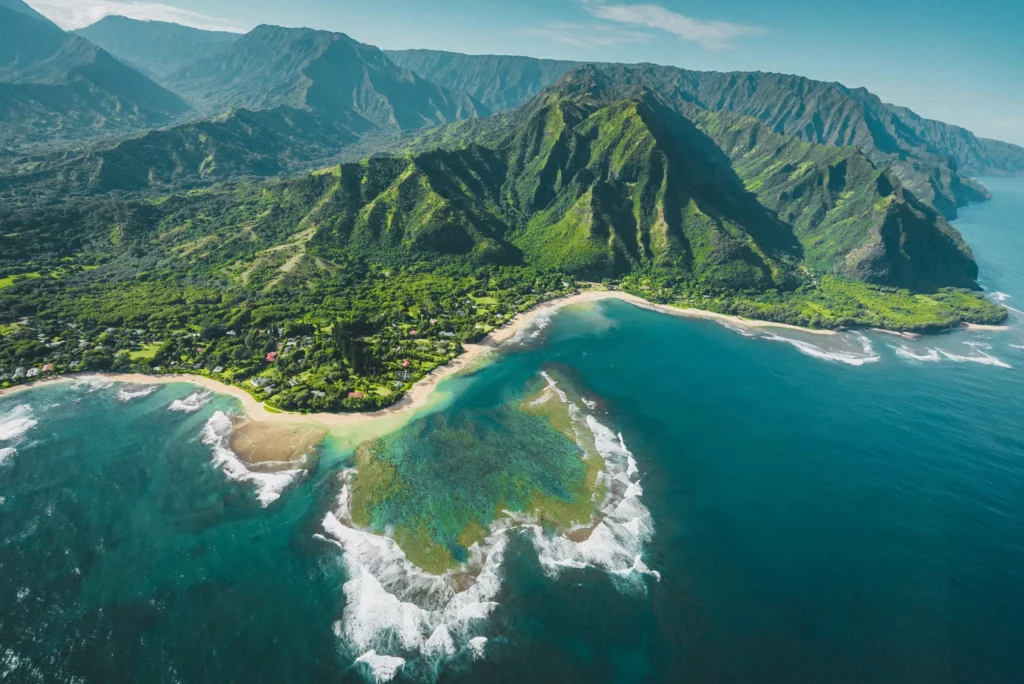Mark Zuckerberg, renowned CEO of Meta, is setting a new standard for billionaire sanctuaries with his latest venture: a sprawling $260 million compound on a hidden Hawaiian island.
This complex isn’t just another luxury retreat—it’s an elaborate fortress designed with sustainability and security at its core, centered around a state-of-the-art doomsday bunker.

In 2021, Zuckerberg and his wife, Priscilla Chan, ventured into a significant property investment by acquiring a former sugar plantation spanning 110 acres on Kauai, the oldest of the Hawaiian islands. This purchase marked the beginning of an ambitious project that deviates significantly from typical billionaire indulgences of extravagant mansions and opulent lifestyles.

The blueprint for Zuckerberg’s compound is as vast as it is impressive. It includes a collection of at least a dozen buildings that house 30 bedrooms and 30 bathrooms. The primary mansion is just the start; the estate will also feature expansive office spaces, conference rooms, and an “industrial-sized” kitchen capable of catering to large gatherings.
The recreational facilities are equally lavish, with multiple swimming pools, state-of-the-art gyms, a sauna, and a tennis court. Adding a touch of whimsy to the luxurious setup are a custom treehouse and intricately designed rope bridges, offering a unique blend of adventure and opulence.

At the heart of this compound is the bunker itself, an imposing structure made from metal and reinforced with concrete for soundproofing. Designed to be entirely self-sufficient, this bunker underscores a growing trend among the elite for extreme security measures.
The motivations for such a fortress can only be speculated upon, but they reflect a broader trend among the world’s wealthiest to prepare for any possible future scenarios.

Beyond the sheer scale and luxury, Zuckerberg’s project is deeply intertwined with environmental considerations. Collaborating closely with local conservation experts, the development plans include measures to protect endangered species and restore native habitats, particularly focusing on the island’s bird populations.
This initiative illustrates an effort to harmonize the new construction with Kauai’s delicate ecological balance, setting a precedent for environmentally conscious development among high-net-worth individuals.
The compound’s sheer extravagance and utility raise questions about the dual nature of such projects. On one hand, they serve as ultimate personal sanctuaries; on the other, they represent a fortress mentality that seems increasingly prevalent among billionaires. The popularity of luxurious, fortified bunkers might signal a shift in how the ultra-wealthy view their safety and legacy amidst global uncertainties.
Moreover, Zuckerberg’s vast expenditure on personal security and luxuries like private jets and high-end watches—such as the Richard Mille he reportedly admired at Anant Ambani’s wedding—paint a picture of a man who spares no expense to secure his comfort and interests. However, with this new compound, Zuckerberg is not just creating a refuge; he is making a significant investment in a future where luxury and security intertwine with sustainability and conservation.
In a world where billionaires are often scrutinized for their spending choices, Zuckerberg’s multi-faceted Hawaiian project might just redefine what it means to invest in a secure and sustainable future.